Bamboo steamers are flat, cylindrical steaming baskets that are no more than 4 to 5 inches tall, although they can vary in width. The baskets, used most commonly in Chinese cooking, have thin slats on the bottom, making them well-suited for steaming a wide variety of foods. The baskets can be used with any pot that can comfortably fit the bamboo steamer, but they were originally designed to be used with a wok.
Basket Basics
Lining the Baskets
Before using, line the bottom of the bamboo steamer. This prevents foods from sticking to the steamer. The lining also adds flavor to foods. A lettuce or cabbage leaf is commonly used for Asian cooking, as the flavor it imparts is mild, and the added moisture helps keeps foods soft.
Other options include:
- banana leaves
- Pandan leaves__
- Shiso leaves
- Sliced green onions
- Whole coriander leaves
- Parchment paper
For dishes that contain a lot of liquid seasoning, place a shallow dish or bowl inside the steamer to hold all of the ingredients. In this case, the slated bottom does not need to be lined before steaming.
Stacking Baskets
Bamboo baskets are designed to be stacked one on top of the other, with the woven bamboo lid covering the top of the final basket. This design allows multiple baskets -- with multiple servings of food -- to be cooked at once. However, the baskets farther away from the steam source will take longer to cook than the ones closer to the bottom. Because of this, place foods that only require light cooking at the top, or be prepared to rotate the baskets during cooking.
Liquid Quantity
The bottom edge of the basket sits 1 to 2 inches lower than the slated rack, so a steaming tray is not needed. Because of the height limit of the bottom edge, never use more than 1 or 2 inches of liquid when steaming with a bamboo basket.
Too much water will mean the food is entirely or partially submerged during cooking, which will boil the food, not steam it.
Steaming Liquid
Water works well for most foods, but seasoning the cooking liquid will impart a gentle flavor to the foods.
Add dried of fresh spices and herbs to the liquid, such as:
- Whole peppercorns
- Slices of ginger
- Crushed garlic cloves
- Pieces of lemongrass
You can also use liquids other than or in addition to just water. Use stock or broth as the steaming liquid for richer-tasting steamed foods, or combine water and rice wine for a lighter aroma that is still headier and deeper in flavor than plain water.
What to Cook in Bamboo Baskets
Bamboo steamer baskets are used to cook a variety of foods. Options include:
- Seafood and meat dumplings
- Steamed buns
- Fish fillets or steaks
- raw vegetables
- Seasoned, cut poultry, beef or pork
Steaming is a gentle cooking method, so seasonings are often added to the foods prior to cooking. For example, rub pork ribs -- cut to 1-inch pieces -- with a mix of fermented black beans, sugar, salt, garlic, ginger and chili before steaming to produce Chinese black bean spare ribs. Cantonese-style steamed fish is made in a bamboo steamer by placing a whole fish or fish filet on a shallow dish inside the steamer. The fish is covered with sesame seed oil, sliced green onions and ginger, and soy sauce before steaming until just cooked.
The bamboo baskets can also be used to steam rice. Soak rice for 1 hour in water before steaming to cut down on cooking time. The baskets can also be used to gently warm other foods, such as tortillas.
Removing or Rotating the Baskets
When the foods are finished steaming, the bamboo steamer will be extremely hot, as it will have absorbed some of the boiling liquid. Remove steamer baskets using metal tongs by picking the baskets up on their edge. Remove the wicker lid to do so, replacing it after the basket has been transferred to keep the food warm. If the baskets need to be rotated during cooking, also move them with metal tongs.
Cleaning and Caring
Bamboo baskets are best washed by hand, with warm, soapy water. If properly lined before cooking, there is often no scrubbing needed as the food is not in direct contact with the basket. Allow the baskets to dry thoroughly before storing, to prevent mold or mildew from forming.
Related Articles
How to Use a Hob Steamer

What Is the Difference Between a ...
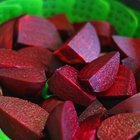
How to Cook Vegetables in a Silicone ...

How to Steam Cabbage in the Microwave

Size of a Steam Table Pan

How Do Cooking Bags Shorten Cooking ...
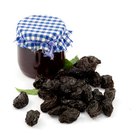
How to Can Jelly Using a Pressure Canner
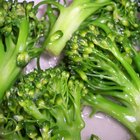
How to Use a Black & Decker Flavor ...
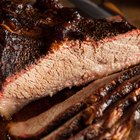
How to Steam a Brisket of Beef

How to Make Rice With a Bamboo Steamer
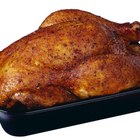
How to Use the Steamer on the Showtime ...

How Long Does It Take to Steam a Yam?

How to Smoke Food With Cedar Chips
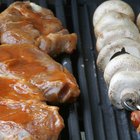
How to Use a Smoker Box for Gas Grilling

How to Cook With a Gas Fireplace

How Long Are Tamales Supposed to Cook?
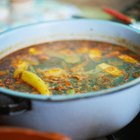
Containers That Keep Food Hot

Why Does Food Cook Faster in a Pressure ...

What Are the Benefits of Clay Body ...

How to Cook Frozen Dumplings With a ...
Writer Bio
Cynthia Au has studied at the Cordon Bleu in Paris and currently works as a chef instructor specializing in food styling. She has worked as a writer and editor with a focus on food and food science since 2007 and regularly teaches both adults and young children about the joys of home cooking.